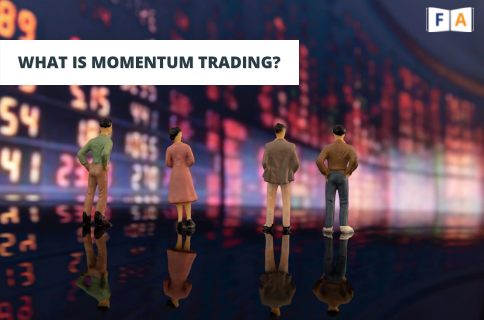
What is momentum trading?
What is momentum trading?
Momentum investing is a trading method in which investors purchase rising stocks and sell them when they appear to have reached their top.
The idea is to work with volatility by looking for purchasing opportunities in short-term uptrends and selling when the stocks lose their momentum.
The investor then withdraws the funds and searches for the next short-term rally, or purchasing opportunity, before repeating the process.
Skilled traders know when to join a position, hold it for how long, and exit it; they can also respond to short-term news-driven spikes or selloffs.
Moving into a position too early, closing out too late, and being sidetracked and missing significant trends and technical deviations are all risks of momentum trading.
What does it entail?
To deal with volatility, overcrowding, and hidden traps that diminish returns, momentum traders need complex risk management procedures. Market participants often disregard these guidelines, blinded by the dread of missing the rally or selloff while everyone else benefits handsomely. The regulations are divided into these sections:
- What equities you choose to invest in is referred to as selection.
- The timing of starting and ending deals is a source of risk.
- Position management combines broad spreads and your holding duration in order to get into the trade early.
- Exit points necessitate regular tracking.
How to choose these securities?
When using momentum techniques, use liquid securities. Because of the complicated fund architecture, leveraged or inverse ETFs’ price movements do not properly reflect underlying indexes or futures markets. Regular funds are wonderful trading vehicles, but when compared to individual stocks, they tend to grind through lower percentage gains and losses.
When feasible, look for equities that trade more than 5 million shares every day. Many prominent companies satisfy these characteristics, but even low-float equities may become extremely liquid when news flow and significant emotional reactions bring in market participants from all around the world.
How do you find the Right Time to Enter?
The finest momentum trades occur when a news shock occurs, causing quick price movement from one level to the next. As a result, diligent players receive buying or selling signals and are rewarded with immediate winnings. As the transaction progresses, more momentum capital enters, causing counter swings that shake away weak hands. The hot money population has reached a tipping point, resulting in unpredictable whipsaws and dramatic reversals.
Early positions reward the most with the least risk, whereas ageing trends should be avoided at all costs. In real-world settings, the reverse occurs since most traders do not recognise the opportunity until late in the cycle and then wait until everyone else has acted.
How to manage your positions?
Because these assets sometimes have huge bid/ask spreads, mastering position management takes time. Wide spreads need more favourable movement in your favour to be profitable, as well as grinding through vast intraday ranges that expose stops—even if technicals stay intact.
Choose your holding time carefully since the longer you stay in a position, the higher the danger. With momentum techniques, Day Trading works well, but it pushes players to build larger holdings to compensate for the higher profit potential of multi-day holds. When maintaining a position for numerous sessions, however, it is advisable to lessen the size of the position to allow for more mobility and to shift the stop placement further away from the present activity.
Exit Strategies That Make Money
When the price is swiftly approaching an overextended Technical Position, exit. On the 60-minute chart, a succession of vertical bars frequently indicates an overextended state. Alternatively, the price might pierce a top or bottom 20-day Bollinger Band’s third or fourth standard deviation.
When technical impediments, such as a significant trendline or a prior high/low, are struck, tighten up stops or contemplate a blind exit. When crossings signify probable trend shifts, exit or take partial profits.
Risks?
The following are some of the dangers of Momentum Trading:
- Early entry into a position before a momentum move has been verified.
- Closing the position too late, after it has attained saturation.
- Failure to keep one’s eyes on the screen, resulting in the missed detection of altering trends, reversals, or indicators of news that catch the market off guard.
- Keeping a post available for an extended period of time. External circumstances that occur after the closing of trade on a given day might generate substantially different prices and patterns the next day.
- Failure to respond swiftly to close an unfavourable position, causing the momentum train to go in the other direction.





